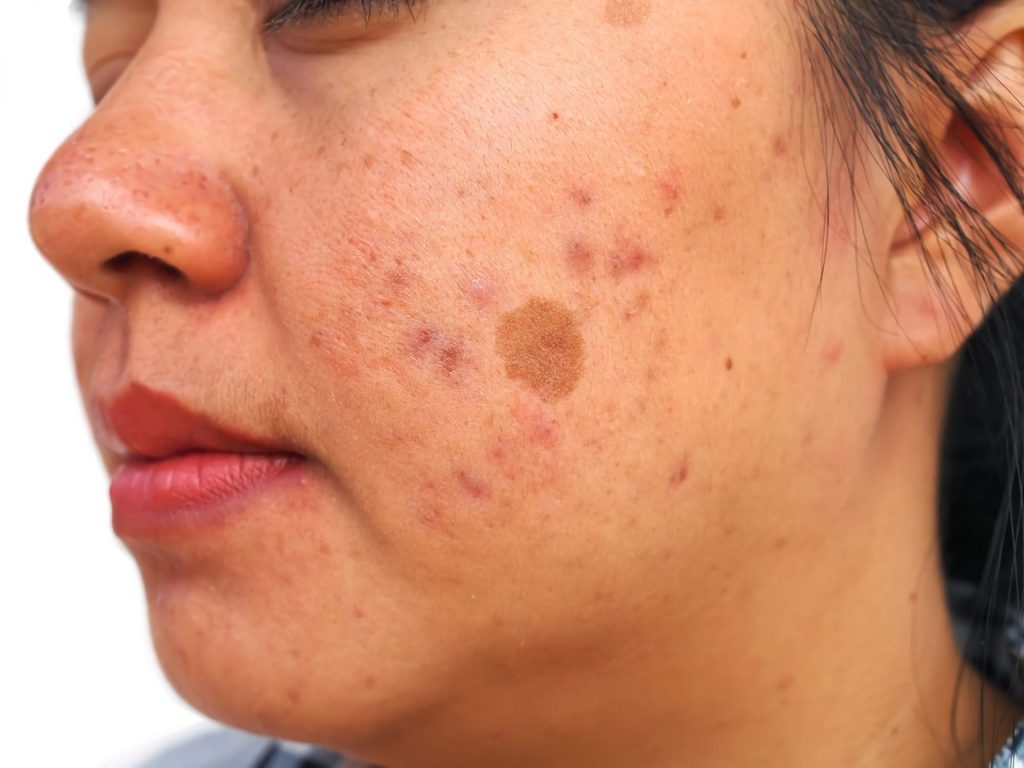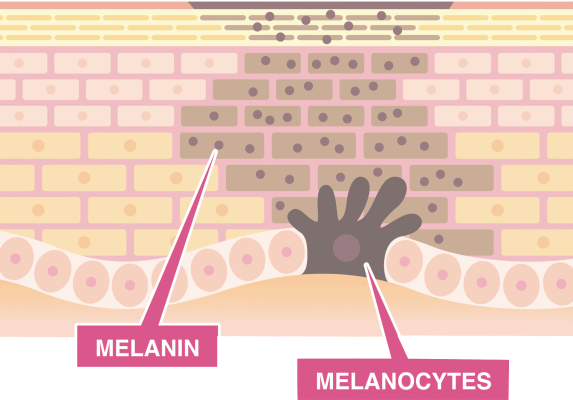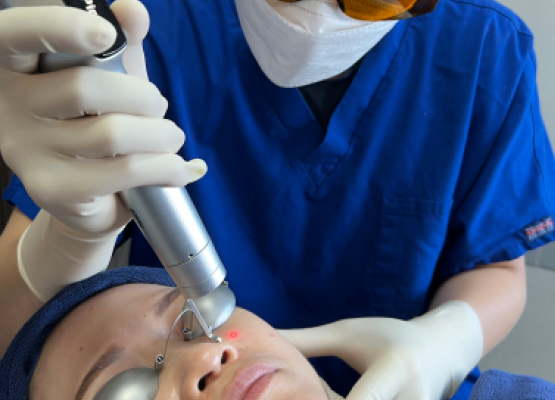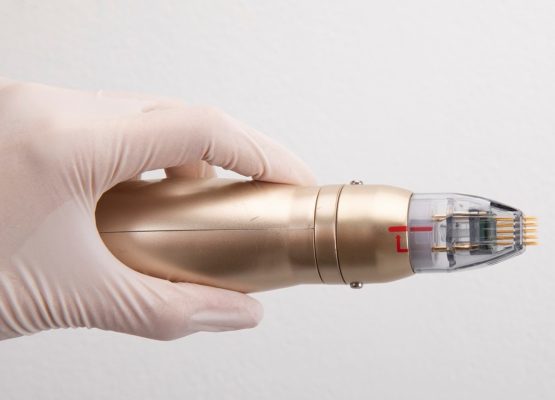
Are you also tired of hiding those discolored patches under layers of foundation? Well, you might be suffering from a skin condition called melasma. This is a skin condition characterized by freckle-like spots or blue-gray or brown patches. It is also referred to as “mask of pregnancy”.
Melasma is not a subtle condition. People with melasma are often on the look-out for the most convenient yet effective solution for this condition.
Learn how we can help you treat melasma.
What Is Melasma?
Also commonly known as “black spot,” melasma is one of the most common disorders of the skin. While individuals between 20 – 40 years of age are more frequently affected, there is an increased risk for pregnant women and those with dark skin tones. Women have a 90% chance of being affected, especially if they take oral contraceptives or hormones.
Melasma appears as either freckle-like spots or flat patches of brown or blue-gray color. It usually results due to the increase in melanin production by the pigment-producing cells responsible for giving the skin its color.
It typically appears on the areas exposed to direct sunlight, such as forearms, neck, and face, commonly affecting the cheeks, chin, forehead, and upper lips. The color of melasma may vary as it darkens and gets worse in the summer while it lightens during the winters.

Due to increased prevalence during pregnancy, it is also sometimes termed as the “mask of pregnancy.” Though it is completely harmless and may also fade over time, it dramatically impacts the person’s mental health as their appearance changes drastically.
What Are The Factors That Can Cause Melasma?
These are a few of the factors that play a crucial role in speeding the process of skin-aging:

Hyperactivity of Melanocytes
Melanocytes are pigment-producing skin cells that are stimulated by the UV radiations present in the sunlight. Increased activity of the melanocytes due to sun exposure, the quantity of melanin also surges, thus giving a darker color to an area of skin.
Increase in the Abnormal Vasculature
The vascular endothelial growth factor (VEGF) has a direct impact on the process of melanin production. It also affects the vascular endothelial cells resulting in the release of cytokines and growth factors, causing an increase in blood vessels in the affected area.
Increased number of Senescent Fibroblasts
Fibroblasts contribute towards the increased release of melanogenic factors. In a melasmic lesion, a greater number of old fibroblasts cells are observed in the upper dermis.
Defective Basement Membrane
Melasma patients have increased metalloproteinase 2 (MPP-2), which damages the basement membrane and affects the melanocytes.
Prevent Melasma
The unfortunate reality of melasma is that there are currently no ways to prevent melasma. However, it is possible to manage the condition with daily long-term care before, during, and after clinic treatments.
- Use sunscreen.
It’s important to apply broad-spectrum sunscreen (min SPF30) every day.
- Avoid sun exposure.
It is critical to avoid direct sun exposure, particularly during the middle of the day. Always wear sunglasses and wear wide-brimmed hats if you have to be outdoors.
- Use plant-based products.
Products containing ingredients such as kojic acid and glycolic acid, as all may be used during pregnancy—but it is best to check with your doctor. It helps minimize the intensity and severity of melasma by impeding pigment synthesis.
- Avoid using traditional lightening and skin-bleaching.
Cosmetic products that contain retinoids, hydroquinone, and steroids are contraindicated in pregnancy.
Melasma Treatment
When dealing with melasma, no single treatment approach is known to offer the best results. Experts prefer a combination approach that is fine-tuned according to the severity of the melasma, the type of melasma, and your skin type.

Melasma Treatments Include :
1
Topicals Lightening Agents
2
Oral medications, e.g., tranexamic acid
3
Chemical Peels
4
Energy-based devices and Lasers
Topicals Lightening Agents
Topical anti-aging products such as retinol, exfoliating hydroxy acids, and antioxidants that can help in improving skin health and delaying the signs of skin aging in general.
Skin experts emphasize that such formulas can benefit everyone, especially those patients who are suffering from melasma, but it is imperative to introduce them into your daily skincare routine gradually from a lower dose. As a result, this allows the skin tissue to avoid irritation by gradually acclimating itself.
On the other hand, prescribed topical products, which include light steroids (reduce inflammation) and hydroquinone (block pigment synthesis in the skin), can help people with melasma.
It is recommended to use these products for short periods of a few months, followed by intervals or treatment breaks.
In-clinic Treatments To Treat Melasma
In-clinic treatments can be useful and helpful for treating melasma, but the first line of defense should always be topical treatments, even though these may require a while to show results. It is important to be patient when dealing with a pigmentary condition like melasma, as it takes time to see results.
Patients with melasma want healthier, clearer, younger-looking skin. With a good pre-treatment assessment, they can get the correct treatment that is customized to their case and help minimize potential risks and disappointments.
Before looking at in-clinic treatments, you can first fine-tune your personal anti-aging home-based skincare for the long term. Your doctor can help review your home care, and ensure that it contains proper products in each category, such as anti-oxidants, retinol, acids, hydration, and sunscreen.
From there, the professionals will recommend items best suited to your skin type while guiding you through the proper use to help ensure correct application.
In some instances, doctors recommend and supervise the use of prescription products that include steroid formulations and specialized hydroquinone.
However, there may be a few people who might not tolerate such products because of skin sensitivities. In this case, in-clinic procedures can be considered, particularly when some pigment synthesis procedures cannot be targeted by tablets or creams. These include laser-based treatments, chemical peels, and radio frequency micro needling.
Light-based treatments such as IPL and lasers have long been used to treat existing pigment in the skin tissue and minimize the new pigment synthesis to help achieve quick results.
That said, it is critical to observe caution when treating melasma with such procedures because overzealous energy use sometimes causes skin irritation and worsens the condition.


While laser-based treatments focus primarily on pigment and the cell structures that synthesize them, radiofrequency microneedling procedures are geared towards normalizing inflamed blood vessels and restoring healthy and clear skin.
These procedures can sometimes create transient micro-channels for administering anti-pigment and anti-oxidant topical products.
It is imperative to be cautious when considering oral prescription treatments (tranexamic acid tablets). It should only be considered for the short term and with the full supervision by a doctor.
Frequently Asked Questions?
The best thing about is that it has almost zero side effects, except for slight redness and mild swelling. This also resolves within a few hours with icing only.
Once the session is over, the patient observes results almost immediately. Over the next few weeks, a noticeable reduction in pigmentation along with less flushing and acne breakouts can be expected. In addition, the skin becomes firmer and brighter as the texture improves.
Other laser treatments only provide temporary results because they act on the superficial layer. On the other hand, Our treatment targets the leading cause by affecting the deeper layers, effectively treating the root cause of the problem.
